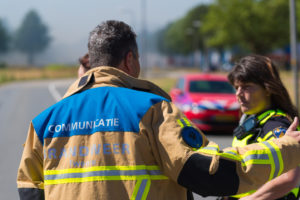What are the major components of a pre-accident plan?
As discussed in LE Pre-Planning, Part 1, a pre-accident plan is important for public safety agencies, government organizations, schools and private companies alike. In the unimaginable occurrence of a critical incident, such as an active shooter scene, a pre-accident plan can be the difference between life and death.
Specific components of pre-accident plans differ between disciplines and even planners, but typically encompass these concepts:
- Survival is paramount. The preservation of life is ALWAYS unquestionably the top consideration. This includes rescue and treatment of victims, and the prevention of more people becoming victims – including those already inside a scene and those responding to help. The concept of “containment” to prevent the spread of an incident will likely be part of a plan.
- Minimize property damage. Closely tied to containment and reducing the likelihood of more victims, planned responses from firefighters, law enforcement, private security, and on-site personnel with specific knowledge and expertise are typically taken into consideration. Existing facility equipment such as sprinklers, alarms, security camera systems, and even future investments in infrastructure may become part of a pre-accident plan.
- Documentation is necessary. With planning come policy, procedure, protocol, and practice. All too often an organization won’t see the benefits of documenting their physical plant with its environment, assets and emergency equipment in place. With L-Tron Corporation’s spherical photographic solution OSCR360, you can quickly and easily capture complete images before and after a critical incident with confidence. Visual documentation is an integral part of the next three purposes.
- Investigation always happens. Whether internal, by an insurance company, a law enforcement department, a regulatory agency, an attorney, or private investigator, having a plan in place with the appropriate documentation ensures that the process following a critical incident goes smoothly.
- Education and training save lives. How people respond to critical incidents is unpredictable. Critical incidents, particularly on the scale of an active shooter incident, are difficult to comprehend. Coping afterward may require medical and mental health treatment. Assigning employees essential roles ahead of emergencies can aid first responders and colleagues alike. Training non-essential personnel how to react without panic also helps. Preparing people to confront the unthinkable provides an opportunity for them to develop a survival mindset.
- Risk management can limit liability. Understanding the purpose of a pre-accident plan and developing one are the first steps towards protecting both lives and property. Critical incidents, unfortunately, result in legal action. While no one can prepare for every contingency, having a comprehensive pre-accident plan in place helps protect everyone’s bottom line.
Tools such as L-Tron’s OSCR360 can assist agencies in creating a pre-event plan and learning the layout of high-risk areas – schools, universities, stadiums, public buildings and more.
To learn more about the specific components of pre-accident plans, read Part 1 of this blog series.
